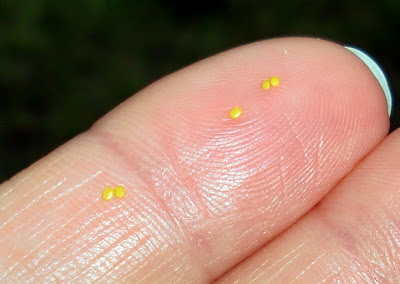By Krysta Denzer
On Thursday, March 17th, the first group of students arrived at Camp Baldwin for the Estuary Life program. What they experienced for the next day and a half were the natural wonders of Camp Baldwin, and of the Alabama Gulf Coast area in general. I would like to share with you some of what these students encountered.
Day One
Instructor Billy (right, yellow bandana) teaches students about animal tracks.
Raccoon prints and a human hand print.
Young leaves on a wild grape vine.
The small grapes make a tasty snack for raccoons.
Students struggle to align themselves according to their birth dates--without
touching the ground. Meanwhile, an unidentified bug crawls around nearby.
Mussels cling to roots at the water's edge. Many creatures enjoy
prying the shells loose, breaking them open, and eating the insides.
Camp Baldwin lies on Wolf Bay, at the tip of southern Alabama. The local environment is an estuary, a body of water partly enclosed, with at least one stream or river flowing into it, and with an open connection to the sea (or, in this case, the Gulf of Mexico). Basically, an estuary is where the freshwater rivers and streams meet the larger bodies of saltwater. Ideal habitats for young aquatic life, estuaries serve as the nurseries of the sea. The Wolf Bay ecosystem is rich in life, both under the water and on land.
Sunset at Camp Baldwin.
Day Two
The Cyrus King surrounded by morning fog, about 6:45 am.
Many types of flowers bloom on the Camp Baldwin grounds.




















